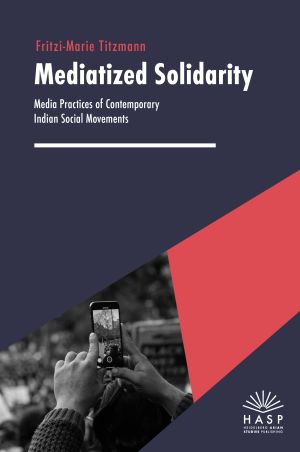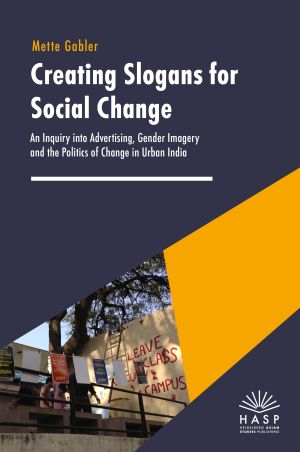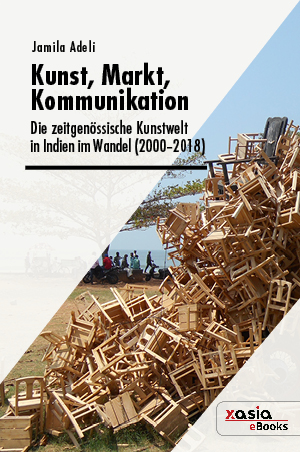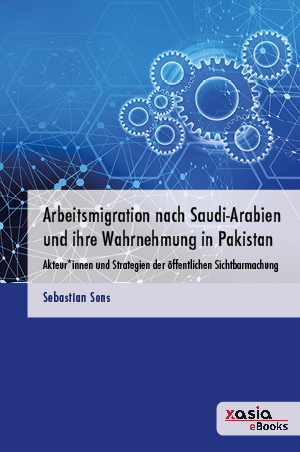Media and Cultural Studies
Die Reihe "Media and Cultural Studies" veröffentlicht Ergebnisse aktueller regionalwissenschaftlicher Forschungen, die sich mit medien- und kulturwissenschaftlichen Fragen befassen. Einen weiteren Schwerpunkt bilden Forschungen an der Schnittstelle von Medienkultur- und Geschlechterforschung. Die Reihe dient insbesondere transregional angelegten und Südasien bezogenen Qualifikationsarbeiten und Sammelbänden als Publikationsplattform. Sie bietet darüber hinaus auch die Möglichkeit, multimediale Inhalte zu publizieren.
In individueller Absprache bietet die Reihe Autor:innen von Monografien sowie Herausgeber:innen von Sammelbänden zur Qualitätssicherung ihrer Publikationen ein Peer-Review Verfahren an.
##plugins.generic.hdforthcoming.forthcoming##
Mediatised Solidarity
In an era marked by rapid media diffusion and globalised social movements, Mediatised Solidarity delves into the evolving dimensions of solidarity within Indian social and protest movements. Focused on the period from 2014 to the present, it analyses the interplay between media practices, including social media, and solidarity expressions. Through three case studies – Shaheen Bagh, the Indian Farmers’ Protest, and contemporary youth climate activism – the book explores how media and visual art shape and are shaped by solidarity and the extent to which shared memories and cultural heritage are used to stage social cohesion
##plugins.themes.ubOmpTheme01.alreadyPublished##
Reimagining Housing, Rethinking the Role of Architects in India
This book explores the self-perception of critical architects in post-independent and contemporary India. It takes particular interest in the role of documentary films and other media forms used by architects to intervene in debates on affordable housing and to share their alternative visions on spatial design and sustainable architecture. As a heterogeneous and highly mobile group of social actors, architects and designers develop and implement viable solutions at the intersection of extremely complex challenges and specific local contexts. The book argues that the interconnections in their design thinking and work can best be understood through the conceptual lens of critical regionalism.
Creating Slogans for Social Change: An Inquiry into Advertising, Gender Imagery, and the Politics of Change in Urban India
What role media content plays in processes of change is an ongoing and multi-layered discussion. Therein, advertising and gender have an extraordinary position. In the context of advertising production in urban India, this book deals with the understanding of social change in the early 2010s. Through an inquiry of the production of advertising created for commercial and/or social purposes, the perceptions of advertising producers are highlighted. The analysis presents the realities of the producers as well as debates surrounding the creation processes. Thereby, the complexities and intertwining of advertising are uncovered, while dynamics of gender, media, and change are discussed.
Postnational Perceptions in Contemporary Art Practice
This publication focuses on the works of Chitra Ganesh (b.1974), Tejal Shah (b.1979) and Nikhil Chopra (b.1976) in order to highlight the changing relationship of the gendered body with national identity in contemporary art practice. Ideas of national belonging are challenged precisely through a concerted focus on identities marginalized by the nation. It proposes the ‘postnational’ as an empowering term to mark the shift away from the nation, and, employing a post-structural framework, it argues that the nature of national identity is in itself a construct.
Kunst, Markt, Kommunikation: Die zeitgenössische Kunstwelt in Indien im Wandel (2000-2018)
Zeitgenössische bildende Kunst findet längst nicht mehr nur in westlichen Kunstzentren statt. Insbesondere „emerging art markets“ wie Indien oder China mit aufstrebenden Mittel- und Oberschichten ziehen seit Beginn der 2000er Jahre verstärkt die Aufmerksamkeit des globalen Kunstfelds auf sich. Diese Kunstmärkte fügen sich jedoch nicht einfach in den westlichen Kunstbetrieb ein, sondern differenzieren sich zu (trans)lokalen Kunstfeldern aus. Das Buch zeichnet nach, wie sich (trans)lokale Kunstinstitutionen, Wissensräume und Ressourcen in Indien zwischen 2000 und 2018 entwickelt haben und legt nahe, den Wandel der zeitgenössischen Kunstwelt in Indien als dezidierten Lokalisierungsprozess zu verstehen. Anhand der India Art Fair, der Kochi-Muziris-Biennale und den Positionierungen und Praktiken lokaler Kunstakteur*innen in Mumbai, Delhi und Kochi wird ein neues Selbstverständnis der kunstinteressierten indischen Gesellschaft sichtbar, das zunehmend zur Emanzipation von westlichen Kunstzentren führt.
Arbeitsmigration nach Saudi-Arabien und ihre Wahrnehmung in Pakistan: Akteur*innen und Strategien der öffentlichen Sichtbarmachung
Arbeitsmigration nach Saudi-Arabien gilt in Pakistan aus wirtschaftlichen, politischen und kulturellen Erwägungen als systemlegitimierend und alltägliches Phänomen: Das Königreich agiert auf (sicherheits-)politischer, wirtschaftlicher und kultureller Ebene als einflussreicher externer Akteur in Pakistan. Es ist außerdem das wichtigste Empfängerland pakistanischer Migranten. Aus diesen Gründen werden kritische Themen im Zusammenhang mit Migration in der pakistanischen Öffentlichkeit kaum thematisiert und stattdessen tabuisiert. In den letzten Jahren haben allerdings neue pakistanische Öffentlichkeitsakteur* innen aus Zivilgesellschaft, Medien und von internationalen Organisationen begonnen, dieses Tabu herauszufordern. Sie wollen prekäre Arbeits- und Lebensbedingungen der Migranten, strukturelle Gewalt sowie die systemische Ausbeutung innerhalb des Migrationsprozesses medial sichtbar machen. Somit tragen die neuen Öffentlichkeitsakteur*innen zu einem medialen Wandel in Pakistan bei, der bestehende Narrative und Tabus zu Migration in Frage stellt. Das Buch analysiert basierend auf umfangreichen empirischen Daten, mit welchen Medienpraktiken und -strategien limitierte öffentliche Räume in Pakistan zu Migration durch diese Akteur*innen erweitert werden.













